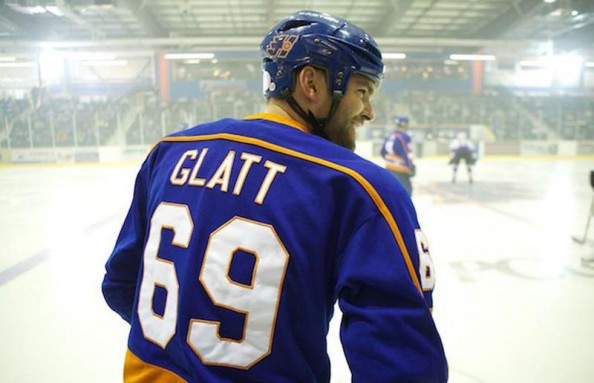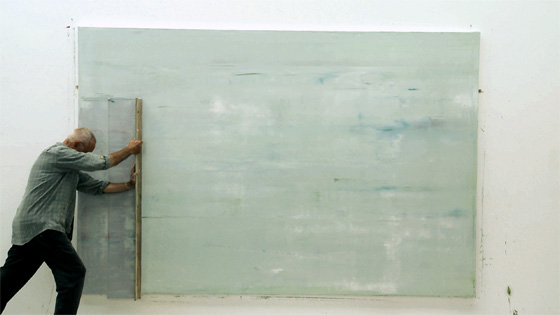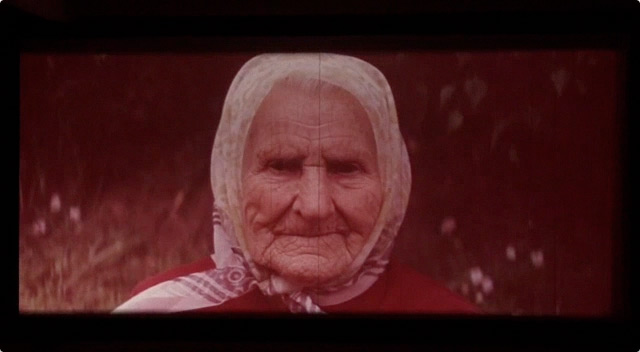Monday, April 30, 2012
Sunday, April 29, 2012
William Klein: I had no real respect for good technique because I didn't know what it was
Klein profile in the Guardian
William Klein "Out Of Necessity" | Icontent | Douglas Sloan Director
William Klein Regis Dialogue with Paulina del Paso
Saturday, April 28, 2012
One Minute volume 6 - Call for entries
One Minute volume 6 - Call for entries
Deadline June 15th 2012
One Minute volume 6 - the sixth in the series of programmes of artists' moving image, curated by artist Kerry Baldry. which will be screened at GLIMMER 2012 - The 10th Hull International Short Film Festival in October. For more information on the previous touring programmes see http://kerrybaldry.com/#/one-minute/4540180591. Please email for further information: kerrybaldry1@yahoo.com
Deadline June 15th 2012
One Minute volume 6 - the sixth in the series of programmes of artists' moving image, curated by artist Kerry Baldry. which will be screened at GLIMMER 2012 - The 10th Hull International Short Film Festival in October. For more information on the previous touring programmes see http://kerrybaldry.com/#/one-minute/4540180591. Please email for further information: kerrybaldry1@yahoo.com
PRAXIS-3: 7 scenes by Dietmar Brehm
One of the filmmakers I was most pleased to be introduced to during the 2011 NYFF Views from the Avant Garde was Dietmar Brehm. Praxis 8 was screened at the festival and just this morning I have just found some online video available of his Praxis project which I enjoyed being able to watch.
via LightCone.org
PRAXIS-3 7 scenes by Dietmar BREHM
2008 / Beta SP / coul / son / 22' 00
via LightCone.org
PRAXIS-3 7 scenes by Dietmar BREHM
2008 / Beta SP / coul / son / 22' 00
Friday, April 27, 2012
Considering FCPX, a year later via DocumentaryTech
Considering FCPX, a year later:
Apple’s Final Cut Pro X was met with a lot of upset when it was launched announced a year ago (and launched in June 2011) at a price point significantly lower than previous Final Cut Pros, and with largely reconstituted features that resembled Apple’s amateur editing program so much it was mocked as “iMovie Pro.”
eBay pricing on sealed packages of Final Cut Pro 7 shot up, as a fine vintage would leap in value. Pro editors cursed Apple and tried to make sense of the new program. Apple responded by doing upgrades that slowly began to restore some features deleted from FCP7.
Now that the dust has settled, where do we stand?
Apple’s Final Cut Pro X was met with a lot of upset when it was launched announced a year ago (and launched in June 2011) at a price point significantly lower than previous Final Cut Pros, and with largely reconstituted features that resembled Apple’s amateur editing program so much it was mocked as “iMovie Pro.”
eBay pricing on sealed packages of Final Cut Pro 7 shot up, as a fine vintage would leap in value. Pro editors cursed Apple and tried to make sense of the new program. Apple responded by doing upgrades that slowly began to restore some features deleted from FCP7.
Now that the dust has settled, where do we stand?
Sack Barrow (exceprt) by Ben Rivers via Vimeo
I saw this at the NYFF Views from the Avant Garde in 2011. A compelling intimate portrait of the "end of the line" for a local factory.
Labels:
ben rivers,
NYFF,
sack barrow,
Views form the Avant Garde
Thursday, April 26, 2012
Amos Vogel, 1921-2012 via Movie Journal by jhoberman
Amos Vogel, 1921-2012:

A heroic cinephile and major figure in the creation of America’s post-World War II film culture, Amos Vogel died yesterday in his adopted hometown New York.

A heroic cinephile and major figure in the creation of America’s post-World War II film culture, Amos Vogel died yesterday in his adopted hometown New York.
Wednesday, April 25, 2012
Paolo Gioli’s Filmarilyn
I saw some of his work at the 2010 NYFF Views from the Avant Garde and have been looking to see everything I can.
An essay from David Bordwell can be found here.
Interesting interview with Paolo Gioli by Claudia D'Alonzo here
Tuesday, April 24, 2012
FILM: Twin Peeks Jean-Luc Godard and Stan Brakhage via Art Forum
FILM: Twin Peeks: Amy Taubin on Jean-Luc Godard and Stan Brakhage at MoMA
Godard (extract)Histoire(s) du cinema
Stan Brakhage - The Dante Quartet
Godard (extract)Histoire(s) du cinema
Stan Brakhage - The Dante Quartet
Monday, April 23, 2012
Sunday, April 22, 2012
One Minute Volume 5: Launch of Moving Image Review & Art Journal
Congratulations to Kerry Baldry for getting her curated series One Minute Volumes 1-4 included in the Moving Image Review.
One Minute Volume 5: Launch of Moving Image Review & Art Journal: The launch of the Moving Image Review & Art Journal takes place on Thursday 10th May at Chelsea College of Art and Design.
Saturday, April 21, 2012
Friday, April 20, 2012
Thursday, April 19, 2012
Kenneth Anger, Martin Scorsese, Todd Haynes, and Copyright via Columbia Univ Press Blog
Columbia University Press » Blog Archive » Kenneth Anger, Martin <b>...</b>: Amidst all of the creative uses of copyrighted material reused in video art, there is one well-known example of a piece of experimental video that was suppressed by copyright holders: Todd Haynes's 1987 film Superstar: The Karen Carpenter ...
Labels:
Copyright,
Kenneth Anger,
Martin Scorsese,
Todd Haynes
Wednesday, April 18, 2012
MINIATURES by stephanie barber
Always happy to see Ms. Barber's work. Saw this at the 2011 NYFF Views from the Avant Garde
Labels:
2011,
Stephanie Barber,
Views form the Avant Garde
Monday, April 16, 2012
Video: Tracking Debris from the Tohoku Tsunami
If Nathaniel Dorsky was a satellite ...
Sunday, April 15, 2012
Martha Rolser: Feature from Centro José Guerrero in Granada
"We live in a forest of signs"
The future of protest video via The Economist
Tools of the trade. Wonder if Witness would train the "Tea Party" to witness ...
“Ephemeral Evidence” Profiles: Rebecca Davis via CultureBot
“Ephemeral Evidence” Profiles: Rebecca Davis:
In a Culturebot manifesto laying out the fundamental differences between visual art performance and contemporary performance, Andy Horwitz suggests that visual art performance is essentially predicated on object making (or the rejection thereof), while contemporary performance is based in time and the notion of creating experience. He argues that visual art performance is more often than not created in isolation, where concept and execution are easily separated (the artist’s intellect and the assistant’s labor), while the contemporary performance experience is most likely collaborative (lighting, sound, decors, music, digital media – each represented by their own designers).
In a Culturebot manifesto laying out the fundamental differences between visual art performance and contemporary performance, Andy Horwitz suggests that visual art performance is essentially predicated on object making (or the rejection thereof), while contemporary performance is based in time and the notion of creating experience. He argues that visual art performance is more often than not created in isolation, where concept and execution are easily separated (the artist’s intellect and the assistant’s labor), while the contemporary performance experience is most likely collaborative (lighting, sound, decors, music, digital media – each represented by their own designers).
Saturday, April 14, 2012
The Startlingly Beautiful Films of Nathaniel Dorsky via NYT
Unseen Guide’s Silent Journeys to Lyric Nature
“I went out with a camera,” Mr. Dorsky said, in describing his entry into filmmaking, “and tried to discover things.”
Saw his work at both NYFF/Views 10 & 11. His book "Devotional Cinema" is worth a read. Wish it was on my Kindle!
“I went out with a camera,” Mr. Dorsky said, in describing his entry into filmmaking, “and tried to discover things.”
Saw his work at both NYFF/Views 10 & 11. His book "Devotional Cinema" is worth a read. Wish it was on my Kindle!
Friday, April 13, 2012
Additional Person Overrates Werner Herzog via ArtFagCity
Additional Person Overrates Werner Herzog

Werner Herzog's 'Hearsay of the Soul', installation viewThe fact of the matter is, Herzog gives us extraordinarily little of his own.And that’s a disappointment. Herzog is a great filmmaker, known for his ability to improvise large portions of his scripts, and motivate his colleagues. The touch of his hand is precisely why so many have been moved by his films. None of that was on view at the Whitney.

Werner Herzog's 'Hearsay of the Soul', installation view
Lewis Klahr's trinket dreamscape via Globe and Mail
Lewis Klahr's trinket dreamscape - Globe and Mail: Nice article of Lewis' The Pettifogger which I saw at Views 2011.
 Globe and Mail | Lewis Klahr's trinket dreamscape Globe and Mail Klahr – who came into prominence in the late 1970s and '80s when found footage became the in-thing in experimental film circles – records each ambient sound in a room, accentuating the fact that it's coming from a TV or stereo. and more » |
podcast #7: Light Industry by Cinemad
podcast #7: Light Industry: 
Cinemad: Light Industry by Cinemad
also available on iTunes under Cinemad
Today's podcast is with the founders and film programmers of Light Industry, a microcinema in Brooklyn specializing in avant garde and unusual film. They are not only human databases of art film history, they know the hurdles of how to run a film festival and a screening space, putting on great shows.

Cinemad: Light Industry by Cinemad
also available on iTunes under Cinemad
Today's podcast is with the founders and film programmers of Light Industry, a microcinema in Brooklyn specializing in avant garde and unusual film. They are not only human databases of art film history, they know the hurdles of how to run a film festival and a screening space, putting on great shows.
A Simple Representation of What Is: Rudy Burckhardt
A Simple Representation of What Is: Rudy Burckhardt:

---
Criterion's forthcoming Hollis Frampton Odyssey is not the only must-buy avant-garde DVD of the month, as Microcinema recently made available their three-disc career-spanning release of Rudy Burckhardt's films. The following is intended as a minute glimpse into Burckhardt's long and robust oeuvre...
---
---
When criticism is no laughing matter
TT: When criticism is no laughing matter: "critics tend as a general rule to do their most memorable writing about works of art that they dislike"
Thursday, April 12, 2012
Stanley Kubrick: Master of Contradictions
Stanley Kubrick: Master of Contradictions:

Who are the great American film directors? More to the point, who do we think are the great American film directors? Well, there’s Ford, of course, the Zeus of the American pantheon, by turns comic, epic, maudlin and humane. Then there’s Welles, the ill-fated genius, abused by producers but beloved of critics. Spielberg, even in his seventh decade, is still the boy wonder; Scorsese the mad scientist. Griffith is the wise forefather, deeply flawed but idolized nonetheless, while Hawks is ageless, just as sly and self-assured as he was at the time of “The Big Sleep” (1946).
Kubrick, however, beats them all.

Who are the great American film directors? More to the point, who do we think are the great American film directors? Well, there’s Ford, of course, the Zeus of the American pantheon, by turns comic, epic, maudlin and humane. Then there’s Welles, the ill-fated genius, abused by producers but beloved of critics. Spielberg, even in his seventh decade, is still the boy wonder; Scorsese the mad scientist. Griffith is the wise forefather, deeply flawed but idolized nonetheless, while Hawks is ageless, just as sly and self-assured as he was at the time of “The Big Sleep” (1946).
Kubrick, however, beats them all.
Wednesday, April 11, 2012
Video Distribution and Meaning: Panel Discussion @ Momenta
Video Distribution and Meaning: Panel Discussion @ Momenta, this Sunday, April 1: This is not an April Fool's set-up, I promise.
Momenta has exhibited over 80 artists who make video since 1991, many of whom were virtually unknown at the time but who have gone on to very prominent careers (including Janet Biggs, Omer Fast, Rico Gatson, Laurel Nakadate, and Michael Smith, just to name a few).
The topic of our discussion: video distribution and its formal impact on meaning, the steady growth of video as a collectible item, and how the mode of distribution affects the perception of the work.

Momenta has exhibited over 80 artists who make video since 1991, many of whom were virtually unknown at the time but who have gone on to very prominent careers (including Janet Biggs, Omer Fast, Rico Gatson, Laurel Nakadate, and Michael Smith, just to name a few).
The topic of our discussion: video distribution and its formal impact on meaning, the steady growth of video as a collectible item, and how the mode of distribution affects the perception of the work.
Watching the Internet: An Interview with Jose M. Alvarez-Monzoncillo (Part Two)
Watching the Internet: An Interview with Jose M. Alvarez-Monzoncillo (Part Two):
What aspects of the Long Tail theory do you find convincing as a means of explaining what kinds of content will thrive in a networked culture? What do you see as the limitations of this model?
What aspects of the Long Tail theory do you find convincing as a means of explaining what kinds of content will thrive in a networked culture? What do you see as the limitations of this model?
I don't believe the Long Tail exists, neither socially nor economically. The Net has permitted the emergence of a certain unsatisfied demand, but it is very small. The physical barriers to analogue distribution are greater on the Net. Added to that, the most difficult barriers to break down are the social, cultural and psychological ones. For example, World Cinema in the United States: before it was not possible to see these films because they weren't distributed, but even with the Net, the viewing of them has not increased. This is spite of them being free in many cases (P2P or Megaloud).
Stanley Kubrick’s First Film: Day of the Fight
Stanley Kubrick’s First Film: Day of the Fight: This is Stanley Kubrick’s first film. In 1951, he was taking photographs for Look magazine but decided he could make a short documentary film for less money than the average production cost. Working with high school friend Alexander Singer, Kubrick filmed a boxer’s preparation for a big fight. It’s a concise and effective documentary with [...]
Canadian Blood on the Ice: Hockey on celluloid from Face Off to Goon
Canadian Blood on the Ice: Hockey on celluloid from Face Off to Goon:
The Stanley Cup playoffs start tonight!
The Stanley Cup playoffs start tonight!
Monday, April 9, 2012
Richard Prince on the Whitney Biennial
Richard Prince on the Whitney Biennial: .
"After lunch I went over to the Whitney. For some reason I wanted to see the biennial. I'm not sure why. Before checking it out I went up to the fifth floor. That's where they hang work that's in the permanent collection. I'm glad I did. There was a gorgeous late fifties Lee Krasner painting hanging in a room of it's own. After staring, I walked down to the fourth floor and it looked like people were exercising on a huge black rubber matt that took up the entire floor. There were maybe fifteen people following the commands of a woman who was talking into a microphone... telling the fifteen people what to do. I think the fifteen people following the commands were people who had walked off the street. They kind of just "joined in". I've heard this type of activity in the art world is called "relational aesthetics"... or something like that... It felt like I was interrupting the "relation". I quickly got out of there. I walked down to the third floor and in the back there was a room filled with an artist's junk. There seems to be a room filled with an aritst's junk in every biennial I've ever been to. I'm not sure why this artist's junk was there. I walked around the corner and there were fifty Dana Shultz paintings on the wall. At least I think they were Shultz's paintings. (I walked by pretty fast). I skipped the second floor and went down to the lobby. What happened to the bookstore? There was none. There were some catalogues thrown out on tables that looked "remaindered"... what was there looked like a bake sale. I walked out of the Whitney having spent less than twenty minutes... fifteen of those standing in front of the Krasner."
- Richard Prince on the Whitney Biennial

"After lunch I went over to the Whitney. For some reason I wanted to see the biennial. I'm not sure why. Before checking it out I went up to the fifth floor. That's where they hang work that's in the permanent collection. I'm glad I did. There was a gorgeous late fifties Lee Krasner painting hanging in a room of it's own. After staring, I walked down to the fourth floor and it looked like people were exercising on a huge black rubber matt that took up the entire floor. There were maybe fifteen people following the commands of a woman who was talking into a microphone... telling the fifteen people what to do. I think the fifteen people following the commands were people who had walked off the street. They kind of just "joined in". I've heard this type of activity in the art world is called "relational aesthetics"... or something like that... It felt like I was interrupting the "relation". I quickly got out of there. I walked down to the third floor and in the back there was a room filled with an artist's junk. There seems to be a room filled with an aritst's junk in every biennial I've ever been to. I'm not sure why this artist's junk was there. I walked around the corner and there were fifty Dana Shultz paintings on the wall. At least I think they were Shultz's paintings. (I walked by pretty fast). I skipped the second floor and went down to the lobby. What happened to the bookstore? There was none. There were some catalogues thrown out on tables that looked "remaindered"... what was there looked like a bake sale. I walked out of the Whitney having spent less than twenty minutes... fifteen of those standing in front of the Krasner."
- Richard Prince on the Whitney Biennial
“Gerhard Richter Painting” Is Mostly Gerhard Richter Painting
“Gerhard Richter Painting” Is Mostly Gerhard Richter Painting:
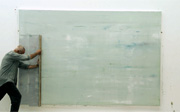
How do you make a documentary about abstract painting? When your subject strives for the indescribable, the normal tools of narration and interview become glaringly imperfect ..

How do you make a documentary about abstract painting? When your subject strives for the indescribable, the normal tools of narration and interview become glaringly imperfect ..
On Liberation Cinema and Raymundo Gleyser
On Liberation Cinema and Raymundo Gleyser:
This is a documentary film about the life and work of Raymundo Gleyzer, Argentine filmmaker, kidnapped and murdered by that country’s military dictatorship in 1976.
Through Raymundo’s life, we follow the story of Latin American revolutionary cinema and the liberation struggles of the 60’s and 70’s. Raymundo was one of the major architects of the militant cinema, yet after his "disappearance" he fell into oblivion.
Daily Briefing. Pasolini's "Gospel" on Notebook | MUBI
Daily Briefing. Pasolini's "Gospel" on Notebook | MUBI: Remember?, an experimental video essay in which Oberzan and his older brother faithfully reenact home movies they made together 20 years earlier, is the best work of its kind since Mark Rappaport's From the Journals of Jean Seberg, with ...
Sunday, April 8, 2012
The Future of Online Art Sales: Q&A With Christie’s Live Director – artmarketblog.com
The Future of Online Art Sales: Q&A With Christie’s Live Director – artmarketblog.com:
The Future of Online Art Sales: Q&A With Christie’s Live Director – artmarketblog.com

What are the characteristics of the main buyers of fine art online?
Our online bidders are an extremely diverse group, including everyone from longtime clients to beginning collectors to some of the trade’s most respected dealers. Many buyers choose online participation due to the convenience of the channel as well as anonymity associated with remote bidding alongside the excitement of the virtual saleroom .
The Future of Online Art Sales: Q&A With Christie’s Live Director – artmarketblog.com

What are the characteristics of the main buyers of fine art online?
Our online bidders are an extremely diverse group, including everyone from longtime clients to beginning collectors to some of the trade’s most respected dealers. Many buyers choose online participation due to the convenience of the channel as well as anonymity associated with remote bidding alongside the excitement of the virtual saleroom .
500 WORDS: James Benning
500 WORDS: James Benning: James Benning talks about Two Cabins
Q&A: Film-maker Andrew Kötting
theartsdesk Q&A: Film-maker Andrew Kötting - The Arts Desk:
 The Arts Desk | theartsdesk Q&A: Film-maker Andrew Kötting The Arts Desk Archival voice recordings and self-consciously declamatory titles enigmatise the raw home-movie footage, which Kötting edited with the ghost of the experimental film-maker Stan Brakhage looking over his shoulder. Kötting has made more formal movies, ... and more » |
Saturday, April 7, 2012
Underground Film Festival Director Roundtable: What Is Underground?
Underground Film Festival Director Roundtable: What Is Underground?:

After Bad Lit: The Journal of Underground Film published an editorial last week entitled “Do Underground Film Festivals Have to Screen Only Underground Films?, Bryan Wendorf, the Artistic Director of the Chicago Underground Film Festival, initiated a conversation on Facebook amongst a few of his fellow festival directors around the world.

After Bad Lit: The Journal of Underground Film published an editorial last week entitled “Do Underground Film Festivals Have to Screen Only Underground Films?, Bryan Wendorf, the Artistic Director of the Chicago Underground Film Festival, initiated a conversation on Facebook amongst a few of his fellow festival directors around the world.
Friday, April 6, 2012
Storytelling: The Film with the Tedious Plot
Storytelling: The Film with the Tedious Plot: 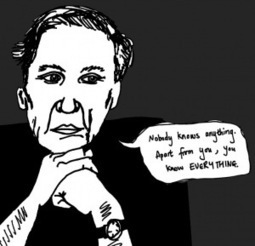
Storytelling is the most important thing in a movie, and a proper story in Hollywood pays dividends. Good storytelling is basically what all books on writing will ever tell you – good characters you can connect with, drama and suspense, resolutions and so on. But I’m not just talking about the film itself, good storytelling also spreads to the world surrounding the film – the trailer and the audience. Hollywood knows this, but they have been resting on their laurels for a long time.
[Image credit: (c)Clare Young 2012]

I don’t think the actual topic has anything to do with success or failure of a movie or TV show and everything to do with how the story is told.
Storytelling is the most important thing in a movie, and a proper story in Hollywood pays dividends. Good storytelling is basically what all books on writing will ever tell you – good characters you can connect with, drama and suspense, resolutions and so on. But I’m not just talking about the film itself, good storytelling also spreads to the world surrounding the film – the trailer and the audience. Hollywood knows this, but they have been resting on their laurels for a long time.
[Image credit: (c)Clare Young 2012]
Subscribe to:
Posts (Atom)

